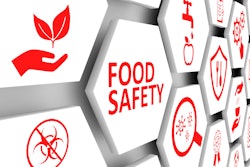
The food industry has faced several challenging years following Brexit, COVID-19, the war in Ukraine, severe weather, animal diseases and now inflation. These disruptions have all created a snowball effect on the prices of food globally, and now, the world is really feeling the impact, with the prices of key food commodities having increased significantly.
According to ONS Stats, the price of cucumbers has increased by 52%, olive oil has increased by nearly half (49%), and hard cheese by 44%. As a result of the high prices, manufacturers, farmers, restaurants, and businesses are having to adjust and get creative to weather the current inflation storm.
Doing more with less
Over the last few months, people and businesses are doing more with less when it comes to managing food supplies and stocks.
Many restaurants are avoiding wastage by utilizing every piece of the products they buy, encouraging more creative cookery, cutting costs and encouraging sustainability. They are also making substitutes in creating their dishes, due to product shortages, and utilizing dual-sourcing strategies to avoid further potential disruptions from suppliers.
Supermarkets are selling what customers might define as odd/quirky-shaped products but are perfectly fine in quality for reduced prices to avoid wastage. And, for many customers, this has been positively received, as they are still able to buy high-quality products at a more affordable rate in the midst of a cost-of-living crisis.
As for businesses, many are being more pragmatic when it comes to sourcing their products, particularly looking to collaborate with suppliers both upstream and downstream to be more cost-effective and avoid further supply chain disruptions. Often, suppliers split upstream and downstream operations to make them easier to manage. However, if businesses want to optimize their supply chains, all operations need to collaborate. Materials, money and information flow between upstream and downstream supply chains. Consequently, changes in one chain will affect the others in one or more of these three critical areas. If organizations balance their upstream and downstream operations, business processes will flow more smoothly, avoiding potential disruptions and better meeting consumer demands.
Despite the challenges the food industry has faced in recent years, for many businesses, the disruptions could be seen as a silver lining. Now, when it comes to suppliers and products, businesses are forced to address both where costs should be cut and what potential disruptions might be averted.
Still a long way from pre-pandemic prices
It is certainly positive to see the food sector demonstrate and implement such creativity in adapting to the myriad of disruptions faced and also the recent news that the food industry has passed the peak of price increases. We are still, nonetheless, a long way from pre-COVID-19 prices. Despite prices and inflation having slightly eased in May from 15.7% to 15.4%, the pinch will still last for consumers, manufacturers, restaurants and businesses.
However, a positive sign that has come to light over the last few months is that many countries have stepped up to help fill the void for certain foods/grains that have faced significant disruption. In particular, due to Russia’s invasion of Ukraine, which is a key exporter of wheat, other countries across the globe have increased farming for this product to help reduce the impact on stock levels and supply issues. Additionally, many businesses and manufacturers have diversified their supply bases to minimize shortages and disruptions, restoring continuity and bolstering resilience to meet consumer demands.
What the future holds for the food industry
So, what does the long term look like? Expect the market to regulate with regard to inflation, and prices will reflect this adjustment. We are seeing already some products improve regarding stock – in particular dairy – and, as a result, some supermarkets over the last few weeks have cut their dairy prices, which is a positive indication that food stocks can recover despite recent challenges.
While the current news is daunting and an obvious concern for food-related businesses, creative solutions aplenty have emerged to ease some of the challenges that they face. The businesses that do implement creative changes and collaborate with suppliers are realizing the positive impact that recent events can have on their products, supplies, and costs – and ultimately, profit margins.

















